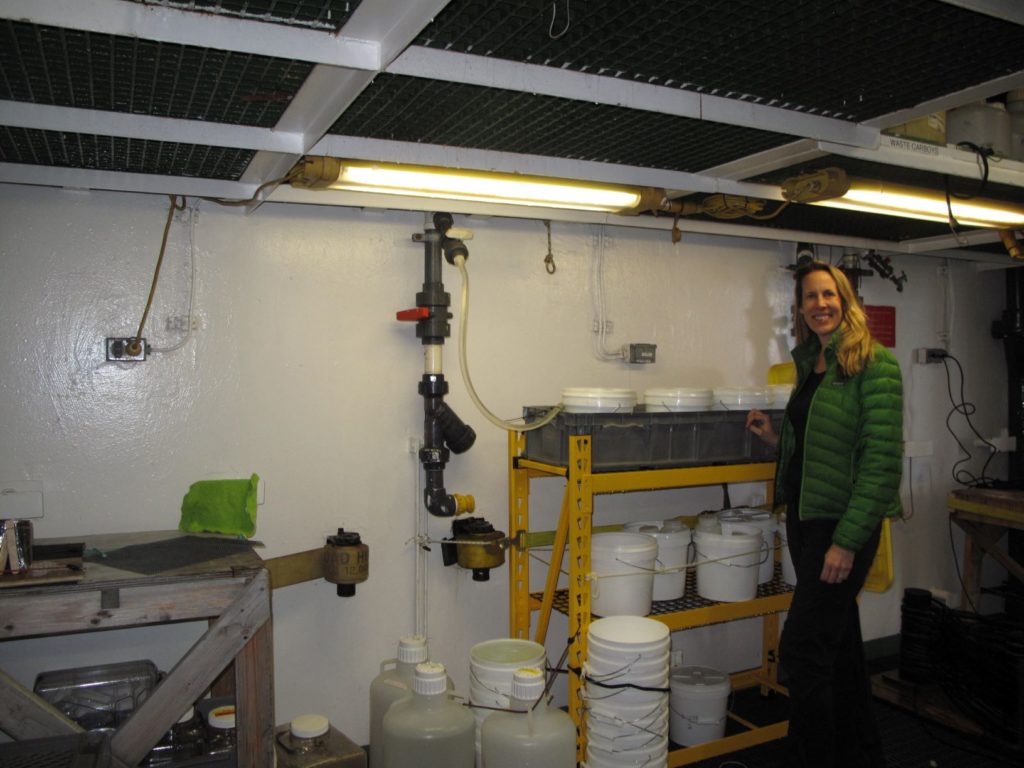The “Aquarium Room”

January 11 2019 (Note: this is #12 in a series of posts describing my NSF-sponsored fieldwork in Antarctica aboard the Laurence M. Gould)
I’ve been conducting experiments in which I incubate copepods under different food conditions. I’m hoping to use these experiments to get insight into how fast copepods respond to a lack of food. I don’t know about you, but I get grouchy after 4-5 hours. I haven’ t seen any evidence of grouchy copepods, but I’m hoping that the expression of their genes will provide insight into their metabolic responses. Which genes do they use to burn through their fat stores, and how long does this take? If I can figure that out, I’ll have a key to understanding the conditions these animals have experienced in their recent past.
We do all these experiments in a big room (think single-car garage) open to the deck of the ship. It’s set up as a “wet lab,” meaning that we have access to continuous flowing seawater, and we can dump water all over the floor without worry (water pours through grates on the floor and is channeled to drain off the ship). My initial problem in using the room for experiments is that it was too warm! The room temperature was running over 40 degrees Fahrenheit, but the seawater was right around freezing (32 Fahrenheit, or 0 Celsius). It might not sound like a big different, but Antarctic animals have famously narrow thermal tolerances (they don’t do well when it gets too hot). We were able to get around this problem with some creative plumbing to continuously circulate cold flowing seawater around my experiment. Right now my animals are in the white buckets on the top shelf of the unit. I’m planning to fill up a lot more buckets in the coming weeks!